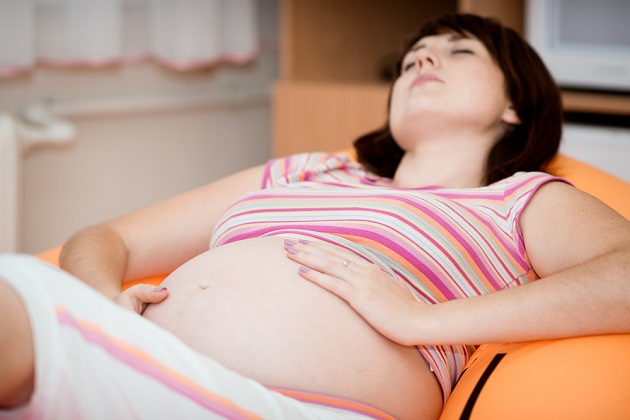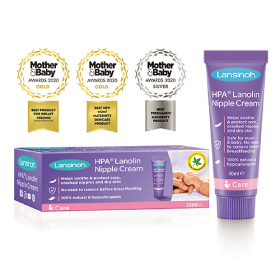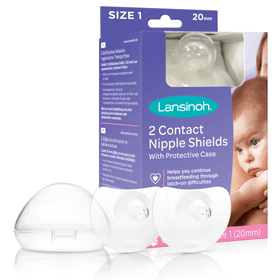Advice Articles
- Home
- Advice Articles
- Baby Skincare
- Pregnancy Conditions
Pregnancy Conditions

Braxton hicks contractions
Your uterus will start contracting gently after about 7 weeks but you may experience these contractions only after the middle of your pregnancy. The tightening will last for about 30 seconds and this could happen once or twice an hour, a few times a day or you may not even be aware of it. This is something your body does to prepare for the big day. They are usually irregular, unpredictable and you’ll probably not feel any discomfort when they occur. As your pregnancy progresses, these contractions may become more intense, and even painful at times. When this happens, they may feel like the real thing. But however strong they feel at the time, if they ease off, they are probably Braxton Hicks. You can use these as practice contractions that help you to rehearse the breathing exercises you’re learning in your antenatal class. Call your midwife or doctor if you also experience watery discharge or bloody vaginal discharge; lower back pain or cramping, pelvic pressure, if you think your baby’s movements have slowed down or stopped, you think your waters have broken or have any bleeding.
Thrush
Vaginal infections are fairly common in pregnancy and thrush is probably the most common. It is caused by a fungus called candida albicans that we all carry. You may have thrush if your vaginal discharge is white, creamy and thicker; it smells strange; if you experience itching or soreness; if it hurts to have sex or you feel a stinging sensation when you wee. You can help prevent thrush by wearing loose cotton underwear and some women find it helps to avoid perfumed bath products. If you think you have thrush, tell your midwife or doctor who will recommend the best treatment suitable for your stage of pregnancy.
Indegestion
About 80% of women experience indigestion at some point during their pregnancy. You might feel full, sick or nauseous or feel the need to burp. Indigestion in pregnancy is generally trigged by that pesky hormone progesterone, which relaxes every muscle in your body including those in your stomach, indigestion in later pregnancy can be caused by the growing womb pressing on your stomach. To help ease the discomfort caused by indigestion, you can try making certain changes to your diet and lifestyle and there are treatments that are safe to take in pregnancy too.
Backache
This is also quite a common condition during pregnancy, with over half expectant mums experiencing some form of backache. One of the main causes of backache is weight gain, most of which ends up distributed mainly around the tummy, changing your centre of gravity and causing you to over-arch your lower back or round your upper back to compensate for it. Another cause for backache is the pregnancy hormone relaxin, which relaxes the ligaments throughout your body helping your pelvis expand to create more room for your baby, whilst at the same time relaxing the ligaments in the spine which force your back muscles to work harder. There are many things you can do to avoid backache such as not lifting heavy objects, wearing flat shoes, sitting with your back straight and well supported, making sure you get enough rest, etc. There are also exercises you can do to ease back pain during pregnancy.
Hiccups
Because of the physiological changes your body is undergoing, one of which is the increased breathing pace (did you know you are inhaling 30% to 40% more air?), you are more susceptible to hiccups especially in the first trimester. Wait them out, they will pass!
Anaemia
Over 85% cases of anaemia are due to iron deficiency. This is either caused by nutritional deficiency or low iron stores resulting from previous pregnancy or previous heavy menstrual blood loss. Other forms of anaemia are folate-deficiency anaemia and vitamin B12 deficiency. Your midwife will periodically check for anaemia throughout your pregnancy and advise on either dietary change or iron tablets if necessary.
Constipation
Also a symptom caused by hormonal changes in your body or sometimes related to the use of iron tablets if anaemic. There are several things that can help avoid or minimise constipation: your diet – eat foods that are high in fibre, such as wholemeal breads, wholegrain cereals, fruit and vegetables, and pulses such as beans and lentils; exercise regularly and drink plenty of water.
Haemorrhoids
Sometimes also called piles, they affect almost half of all pregnant women, especially in the mid-second and third trimester. Veins in the rectal wall are caused to swell or bulge and itch by pressure from your enlarging uterus starting around week 25, plus increased blood flow to the pelvic area during pregnancy. They can also develop postpartum as a result of pushing during labour. There are many things you can do to prevent and help treat them, such as staying regular, doing your pelvic floor exercises, keeping active and avoiding standing for long periods of time, taking a warm bath and staying clean, sleeping on your side and there are also medical treatments which your doctor or midwife can recommend.
Pre-eclampsia
Affects up to 5% of pregnancies and develops in the second half of the pregnancy. Early signs include high blood pressure and protein in your urine which should be picked up by your midwife during your antenatal appointments. Further symptoms can include swelling of feet, ankles, face and hands and visual disturbances including seeing stars. It is important to seek medical advice immediately if you suspect you have this condition or notice any of the symptoms as sometimes this condition can lead to complications and require treatment.
SPD – Symphysis Pubis Dysfuction
This can occur at any time during the pregnancy or after giving birth as your pelvic joints move more during and just after pregnancy. It’s symptoms include pain in the pubic area and groin which are the most common, but also back pain, hip pain, grinding/clicking sensation in your pubic area, pain down the inside of your thighs. Several treatments will help should you experience this condition: a pelvic support belt will give you welcome relief; acupuncture may also help; exercise is key especially focused on your tummy and pelvic floor muscles as well as osteopathy and chiropractic treatment with a practitioner experienced in treating pregnant women. If you think you are experiencing SPD speak to your midwife who will be able to refer you to a physiotherapist for further advice and treatment. It usually resolves by itself after pregnancy.
Hip pain
Hip pain during pregnancy is pretty much inevitable as your pelvis joints are moving more which then will cause you pain and discomfort and may also lead to symphysis pubis dysfunction (SPD). To briefly summarise, the symphysis pubis is a stiff joint that connects the two halves of your pelvis. This joint is strengthened by a dense network of tough, flexible tissues (ligaments). That pesky hormone progesterone acts as a muscle relaxant in pregnancy and can relax the symphysis pubic enabling it to move around when you walk.
The pain you may feel in the pubic area and groin are the most common symptoms, though you may also have the following signs:
- Back pain, pelvic girdle pain or hip pain.
- A grinding or clicking sensation in your pubic area.
- Pain down the inside of your thighs or between your legs.
- Worse pain at night- Getting up to go to the toilet in the middle of the night can be especially painful.
To help relieve the above pain, the following treatments are recommended to try:
- Exercise – Especially focus on your tummy and pelvic floor muscles. These will improve the stability of your pelvis and back.
- You should also be given advice on how to make daily activities less painful and on how to make the birth of your baby easier. Your midwife should help you to write a birth plan which takes into account your SPD symptoms.
- Acupuncture may help and is safe during pregnancy.
- Osteopathy and chiropractic treatment may help, but see a registered practitioner who is experienced in treating pregnant women.
- A pelvic support belt will give quick relief.
Further measures you may wish to try:
- Do pelvic floor and tummy exercises- Get down onto your hands and knees and level your back so that it is roughly flat. Breathe in and then as you breathe out, squeeze in your pelvic floor muscles and pull your belly button in and up. Hold this contraction for between five and 10 seconds, breathing through it. Relax your muscles slowly at the end of the exercise.
- Try not to move your legs apart when your back is slumped or when you are lying down. Take care when getting in and out of the car, bed or bath. If you are lying down, pull your knees up as far as you can to stop your pelvis from moving and make it easier to part your legs. If you are sitting, try arching your back and sticking your chest out before parting or moving your legs.
- Don’t push through your pain. If something hurts, stop doing it.
- Move little and often. You may not feel the effects of what you are doing until later in the day or after you have gone to bed.
- Rest regularly by sitting on a birth ball or by getting down on your hands and knees. This takes the weight of your baby off your pelvis and holds it in a stable position.
- Try not to do heavy lifting or pushing.
- Take one step at a time when climbing stairs.
- If swimming, avoid breaststroke and take care with other strokes- You may feel swimming is helping your pain while you are in the water, but it could make you feel worse when you get out.
When getting dressed, sit down to put on your underwear or trousers
Related Categories
Related Products
-

HPA® Lanolin Nipple Cream for Sore & Cracked Nipples
Sore nipples are very common during breastfeeding and can often be a result of the uncomfortable positioning... View -

Contact Nipple Shields
For mothers that are experiencing latching challenges, Lansinoh® Contact Nipple Shields are effective... View
